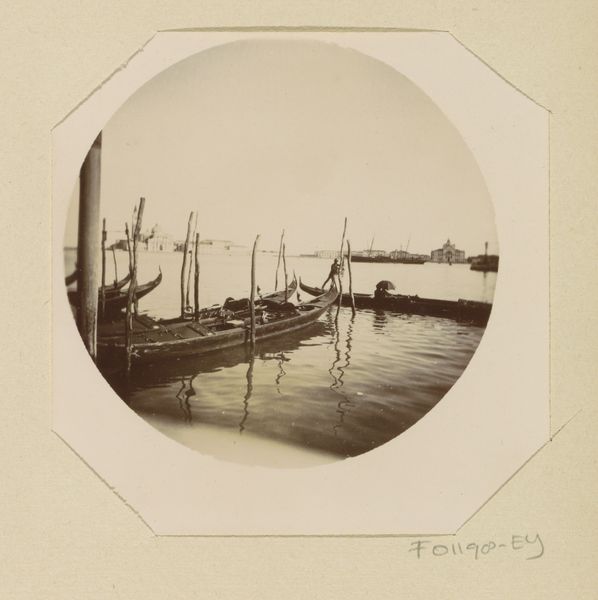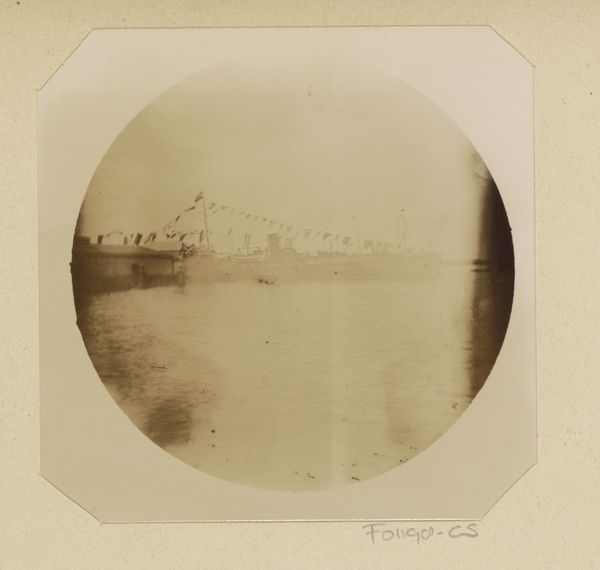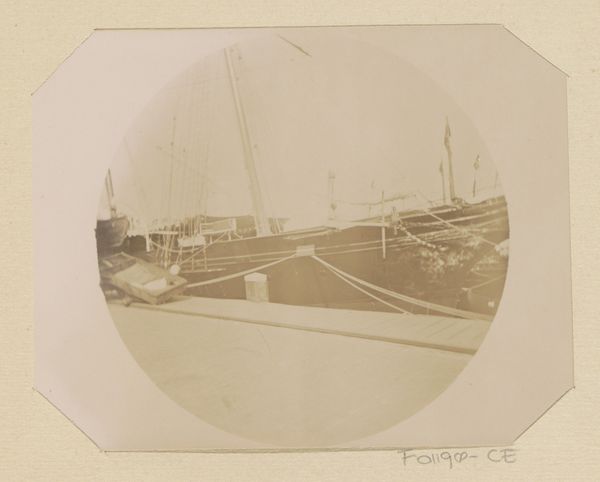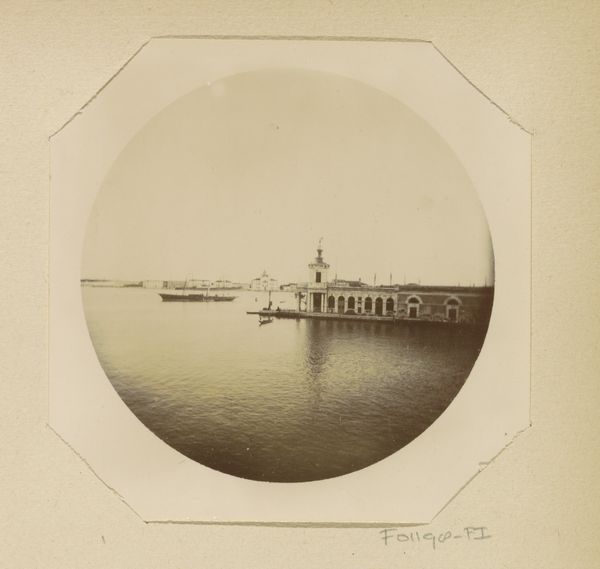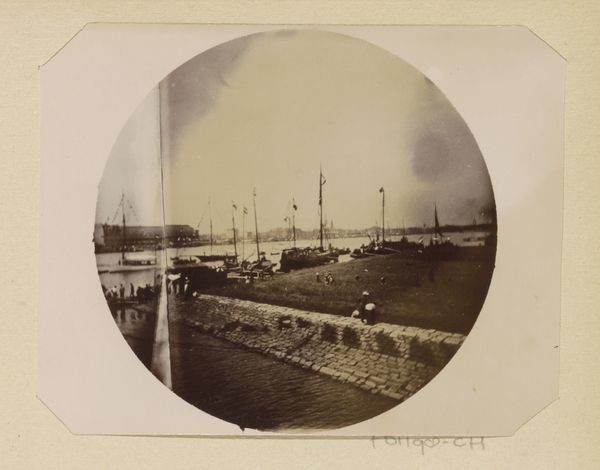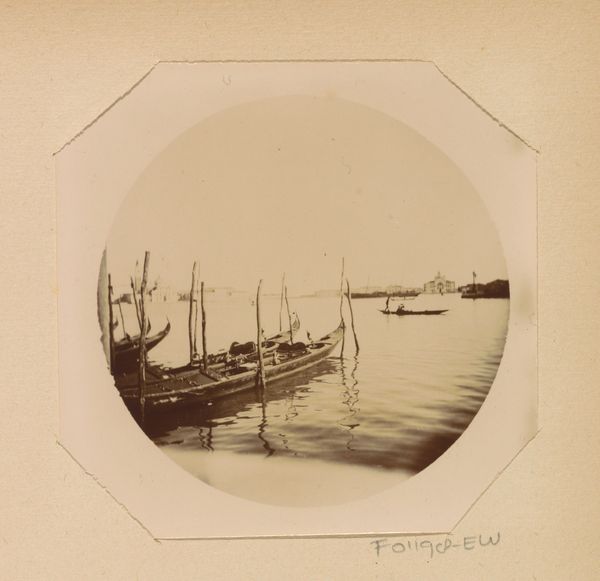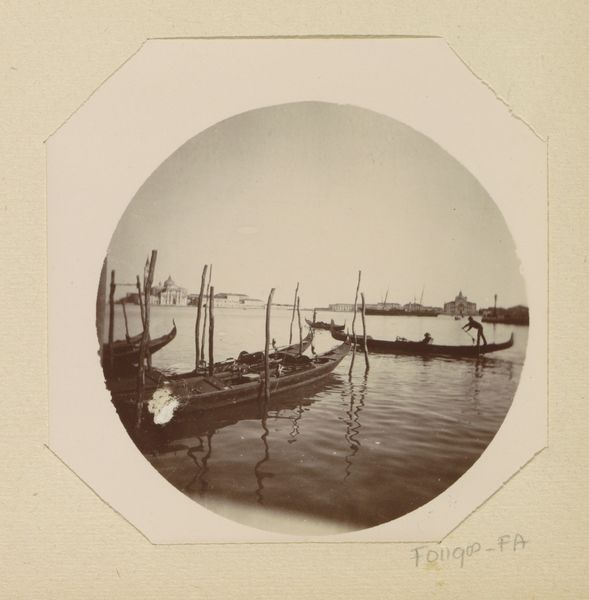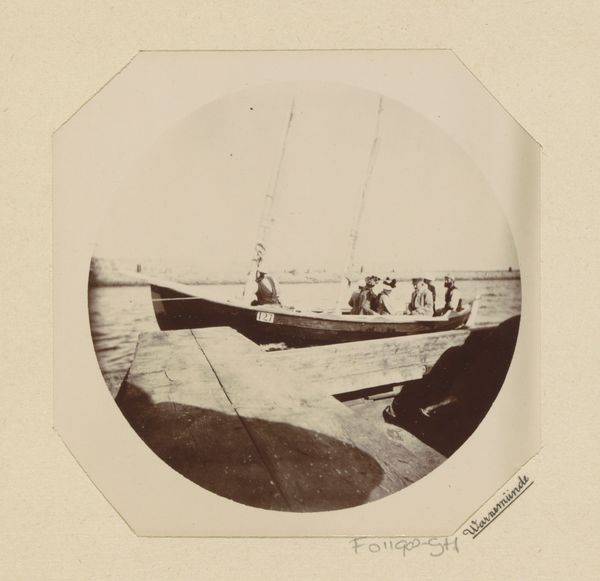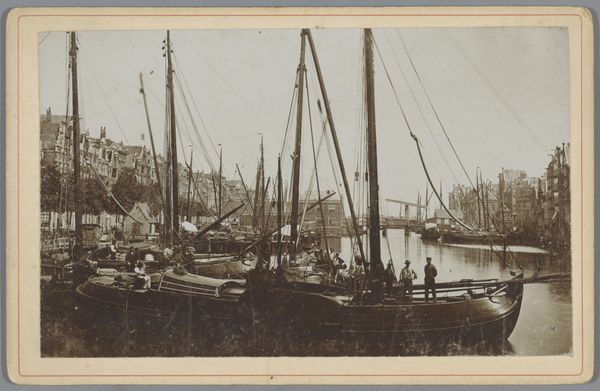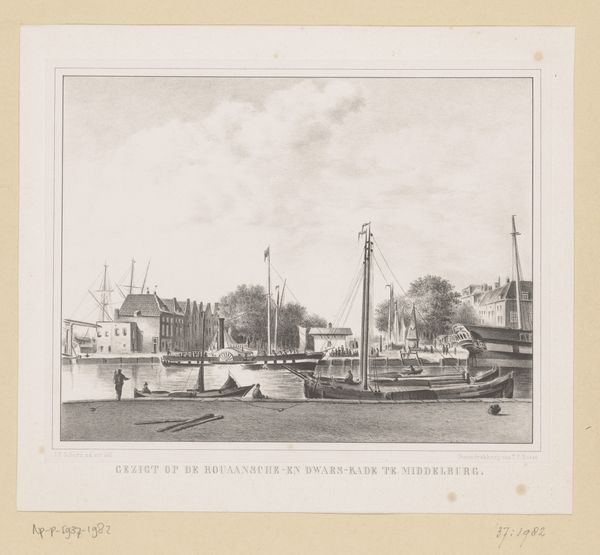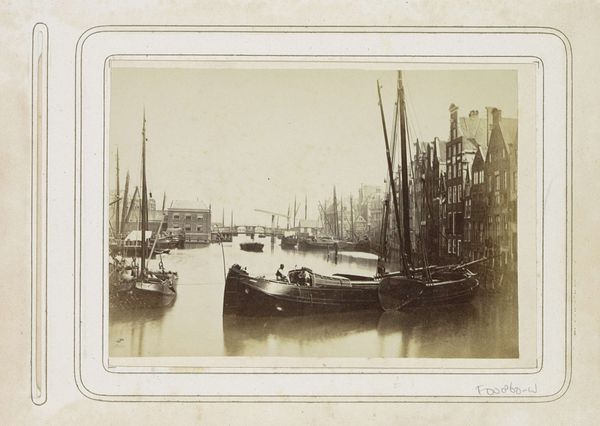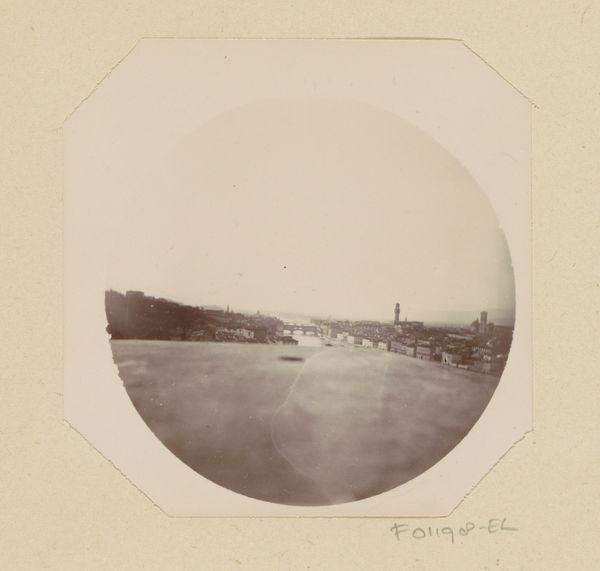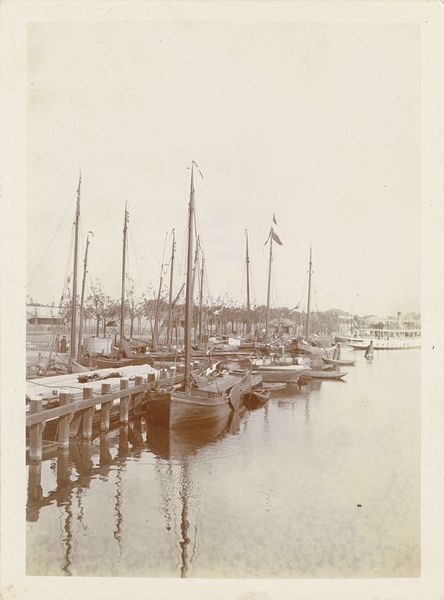
photography, albumen-print
#
pictorialism
#
landscape
#
photography
#
cityscape
#
albumen-print
Dimensions: height 89 mm, width 119 mm
Copyright: Rijks Museum: Open Domain
Curator: Let's turn our attention to this albumen print, “View of the Harbor in Warnemünde, Rostock,” captured by Willem Frederik Piek Jr. sometime between 1889 and 1893. Editor: My immediate impression is a feeling of quietude. The sepia tones evoke a sense of nostalgia. I notice a sharp contrast; there's a clear distinction between the serene canal and the obscured activity near the viewer. It pulls me in. Curator: It’s quite interesting how Piek composed this. Albumen printing involved coating paper with egg whites, then sensitizing it with silver nitrate. The sharpness you mention is partially due to that process. But it was also labor intensive, often outsourced to specialized studios for large print runs. These prints allowed wider audiences to acquire images, not just the elite. Editor: The visual language is fascinating. Water has often served as a potent symbol for transition, the unconscious. I see the reflection of boats and structures; do you feel it’s possibly a double image speaking to layers of reality? The proximity to the ships speaks of an entryway to new opportunities, commerce, maybe escapism. Curator: That's a lovely reading, yes, especially considering Warnemünde’s growth as a popular seaside resort. I tend to think of photography's relationship to industry here. It allowed him to depict this leisure site. Photography at this time existed alongside heavy industrial manufacturing – photographic supplies had become industrialized themselves. Think about the labor that went into preparing those salted papers on which Piek made his positives by sunlight. Editor: I do note the figures milling around on the larger ship—though their identities are obscured by the shadow; their intentions are unknown. Maybe they signify an ambiguity around maritime activities at the turn of the century, particularly given Germany’s naval expansion at this time. It seems intentional for the viewer to only partly witness such an active site from such a removed distance, though. Curator: That visual withholding certainly draws attention to what's present—and, I suppose, what the process has also preserved through chemistry and physical manipulation. It brings photography's capability of preserving history, a certain moment of light and work at this German harbor city to mind. Editor: Absolutely. Considering the era, this image quietly resonates on many symbolic levels; the visual weight and social complexities are subtle, like a soft whisper echoing a powerful message across time.
Comments
No comments
Be the first to comment and join the conversation on the ultimate creative platform.
